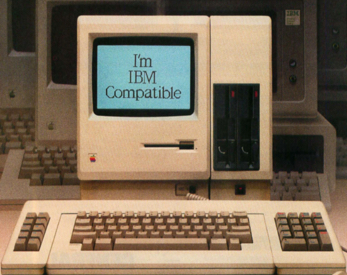
Retro spotlight: Mark Dean and the IBM PC















Published on 22 February 2024 by Andrew Owen (5 minutes)
You might have read about Dr. Mark E. Dean elsewhere this month. Chances are, it was what in newspapers we used to call a “cuttings job”. This is when you assemble an article from previously published information. But you’re supposed to at least check that the information is accurate and still current. So while I’d like to focus on why one of the engineers responsible for the IBM PC has been using a tablet as his primary device since 2011, instead I need to clear up some misconceptions.
Don’t get me wrong, this is still a cuttings job, but I started out with the man’s own words. I often link to Wikipedia for a general overview of a subject, not least because at least some of the time there’s a French version of the article available. But I don’t consider it a reliable source. As a case in point, it states that Dean led the team that developed the IBM PC in 1982. That machine was launched in August 1981. Here’s what I have been able to piece together from independent sources.
Dean was born in 1957 in Jefferson City, Tennessee. Even in elementary school, he had a gift for math. He attended Tennessee Valley High School after integration and excelled both academically and in athletics. He went on to study electrical engineering at the University of Tennessee, graduating top of his class in 1979 while part of the university’s minority engineering program. Shortly afterward, he joined IBM. I don’t buy that in 1980 IBM would put a black guy fresh out of college in charge of the IBM PC project. He was one of a dozen engineers involved, but his contributions got him noticed. In 1982, he gained his master’s in electrical engineering from Florida Atlantic University. And in 1984 he led the team that developed the PC/AT.
“I also was able to demonstrate my ideas to a point where it was hard to argue their viability. It took a lot of work and sacrifice. But I was confident and believed I had some good ideas. Fortunately, there were a few in the right leadership positions that agreed with my ideas.”
I found a list of 32 patent applications with Dean’s name on them, at least a dozen relating to the IBM PC series. One that rightly gets a lot of attention is for what became known as the ISA bus, which he co-invented with Dennis L. Moeller in 1984 (Dean had previously worked on the 8-bit PC bus for the original IBM PC). Its successors continued to be used into the late 2000s. In 1992, he earned his PhD in electrical engineering.
“When I was accepted at Stanford I had been out of school for ten years, so it was very difficult. I encourage people to go on to graduate school, but they should not wait as long as I did. It makes it very hard, But for me it was definitely the right thing to do and Stanford was the right place to do it.”
In total, Dean spent over 30 years at IBM. In 1995 he became its first black IBM Fellow. In 1997, he became VP of performance for the RS/6000 division, the same year he and Moeller were inducted into the National Inventors Hall of Fame. In 1999 as director of IBM’s Austin, Texas research lab, he led the team that delivered the first silicon clocked at 1 GHz. His last role with IBM was as chief technology officer for the Middle East and Africa. He left in 2013 to join the University of Tennessee, where he is now emeritus professor. In 2014, he applied for ten patents relating to neural networks, of which five of which were granted, bringing his total to 27. I’ve not been able to find any later filings.
In 2011 on the 30th anniversary of the IBM PC he achieved a certain level of notoriety. In an IBM blog, he said that the PC was going the way of cathode ray tubes, that he was glad IBM had sold its PC division and that the tablet was now his device of choice. What the coverage at the time missed was that in 1998 in an interview with U.S. News & World Report, he had predicted the iPad:
“We are almost there. The only technology left to conquer is the display, we have the other pieces. We will see it pretty soon – easily within ten years.”
When PCWorld contacted Dean in 2014 to ask if he had really meant it, he said that if you could wirelessly attach a large monitor and keyboard to a tablet, it could entirely replace a desktop or laptop PC. This became practical on Apple devices with the launch of Airplay 2 in 2018. In the same article, he predicted that smartphones would eventually be replaced by wearables and that tablets would eventually give way to virtual workstations. The Apple Watch launched in 2015 and Vision Pro just launched.
I’m a bit behind Dean, as I didn’t switch to a tablet as my primary device until 2018. But in my defense, I was holding out for a USB-C port. On the other hand, I still primarily use my phone for calls and text and I don’t own any wearables. And as much as I enjoy VR gaming, I don’t think I’d even be in the market for even a non-pro version of the Vision.